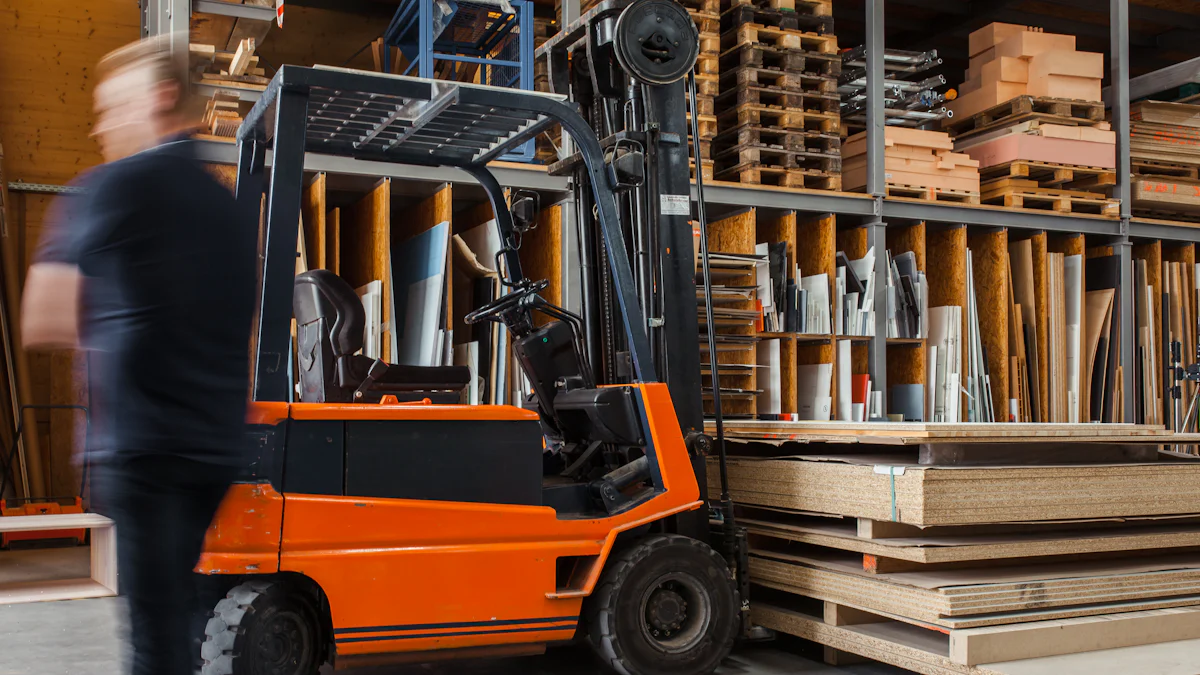
Pallet jacks are essential tools in various industries, allowing workers to effortlessly move heavy pallets within warehouses and distribution centers. These devices, resembling hand carts with lifting arms, boast an impressive lifting capacity of up to 1,000 lbs. The global market for pallet jacks is thriving, with the manufacturing sector leading the way by contributing significantly to revenue. This blog aims to shed light on the limitations of pallet jacks, ensuring safe and efficient workplace practices.
Limitations in Lifting Capacity

When operating a pallet jack, it is crucial to be aware of its weight restrictions. The maximum weight that a standard pallet jack can handle is approximately 800 lbs or 363 kg. Exceeding this weight limit can lead to severe consequences, including potential damage to the equipment and compromising workplace safety.
In addition to weight limitations, height restrictions are also significant factors to consider when using a pallet jack. Most pallet jacks have a maximum lifting height of around six feet or 1.83 m, which restricts their ability to stack pallets vertically. This limitation hinders the efficient utilization of vertical storage space within warehouses and distribution centers.
It’s essential for operators to understand these lifting capacity constraints to ensure safe and effective use of pallet jacks in various industrial settings.
Limitations in Maneuverability
Terrain Restrictions
When considering the maneuverability of a pallet jack, it is essential to acknowledge its limitations on various terrains.
Unsuitability for rough or uneven surfaces
Pallet jacks are designed for smooth and level surfaces, making them unsuitable for rough or uneven terrains. Operating a pallet jack on such surfaces can not only damage the equipment but also pose safety risks to the operator and surrounding personnel.
Inability to navigate steep inclines
One significant limitation of pallet jacks is their inability to navigate steep inclines. Due to their design and functionality, pallet jacks lack the necessary mechanisms to handle steep slopes effectively. This restriction emphasizes the importance of assessing the terrain before using a pallet jack to ensure safe and efficient operations.
Space Restrictions
In addition to terrain challenges, pallet jacks face restrictions when operating in confined spaces.
Difficulty in tight spaces
Navigating through narrow aisles or tight storage areas can be challenging with a pallet jack. The bulkiness of the equipment may limit its movement in compact spaces, hindering productivity and potentially causing disruptions in warehouse operations.
Inability to make sharp turns
Another limitation in maneuverability is the inability of pallet jacks to make sharp turns. The design of these devices restricts their agility when it comes to navigating corners or making quick directional changes. Operators must be cautious when maneuvering pallet jacks in confined spaces to prevent accidents and damage to goods.
Limitations in Functionality
Specialized Tasks
Inability to load/unload trucks
When considering the functionality of a pallet jack, one notable limitation is its inability to handle the task of loading or unloading trucks efficiently. Unlike forklifts that are designed for such specialized tasks, pallet jacks lack the necessary features and lifting capacity required for seamless loading and unloading operations.
Inability to perform precise positioning
Another significant limitation of pallet jacks is their inability to achieve precise positioning of heavy pallets or goods. Due to their manual operation and limited maneuverability, pallet jacks may struggle with accurately placing loads in specific locations, which can impact workflow efficiency and potentially lead to safety hazards.
Automation and Efficiency
Lack of automation features
Unlike modern industrial equipment that incorporates advanced automation technologies, traditional pallet jacks lack automation features. This absence of automated functionalities limits the speed and efficiency of moving goods within warehouse settings, especially when compared to electric pallet jacks or forklifts equipped with automation capabilities.
Comparison with forklifts and other machinery
In comparison to forklifts and other industrial machinery, pallet jacks stand out as basic yet essential tools for material handling tasks. While forklifts require specialized training and licensing for operation, pallet jacks offer a simpler alternative without these stringent requirements. Understanding the differences between these equipment options is crucial for businesses aiming to optimize workplace safety and operational efficiency.
Safety Limitations
Riding Restrictions
When operating a pallet jack, it is crucial to adhere to the safety guidelines that prohibit riding on pallet jacks. This rule ensures the protection of operators and prevents potential accidents that may arise from unauthorized use of the equipment. Additionally, allowing passengers on a pallet jack poses significant risks, including injuries, falls, and collisions. Prioritizing safety measures by strictly following these restrictions is paramount for maintaining a secure work environment.
Pushing, Towing, and Hoisting
One notable limitation of pallet jacks is their inability to push, tow, or hoist other pallet jacks. Attempting such actions can lead to equipment damage, workplace hazards, and potential injuries to personnel. It is essential for operators to understand the designated functions of pallet jacks and avoid using them beyond their intended capabilities. Improper use not only jeopardizes safety but also diminishes the efficiency and longevity of the equipment.
- Understanding the capabilities and limitations of pallet jacks is crucial for safe operation. Safe usage with minimal risk can be ensured by following these guidelines.
- Weight capacity is a critical factor for safe and efficient pallet jack operation. Prioritizing the right weight capacity enhances operational productivity and prevents equipment strain.
By acknowledging these limitations, operators can ensure a safer work environment while maximizing efficiency. Exploring alternative equipment options for tasks exceeding a pallet jack’s capabilities can further enhance workplace productivity and safety measures. Remember, informed decisions lead to smoother operations and reduced risks in industrial settings.
Post time: Jun-29-2024
